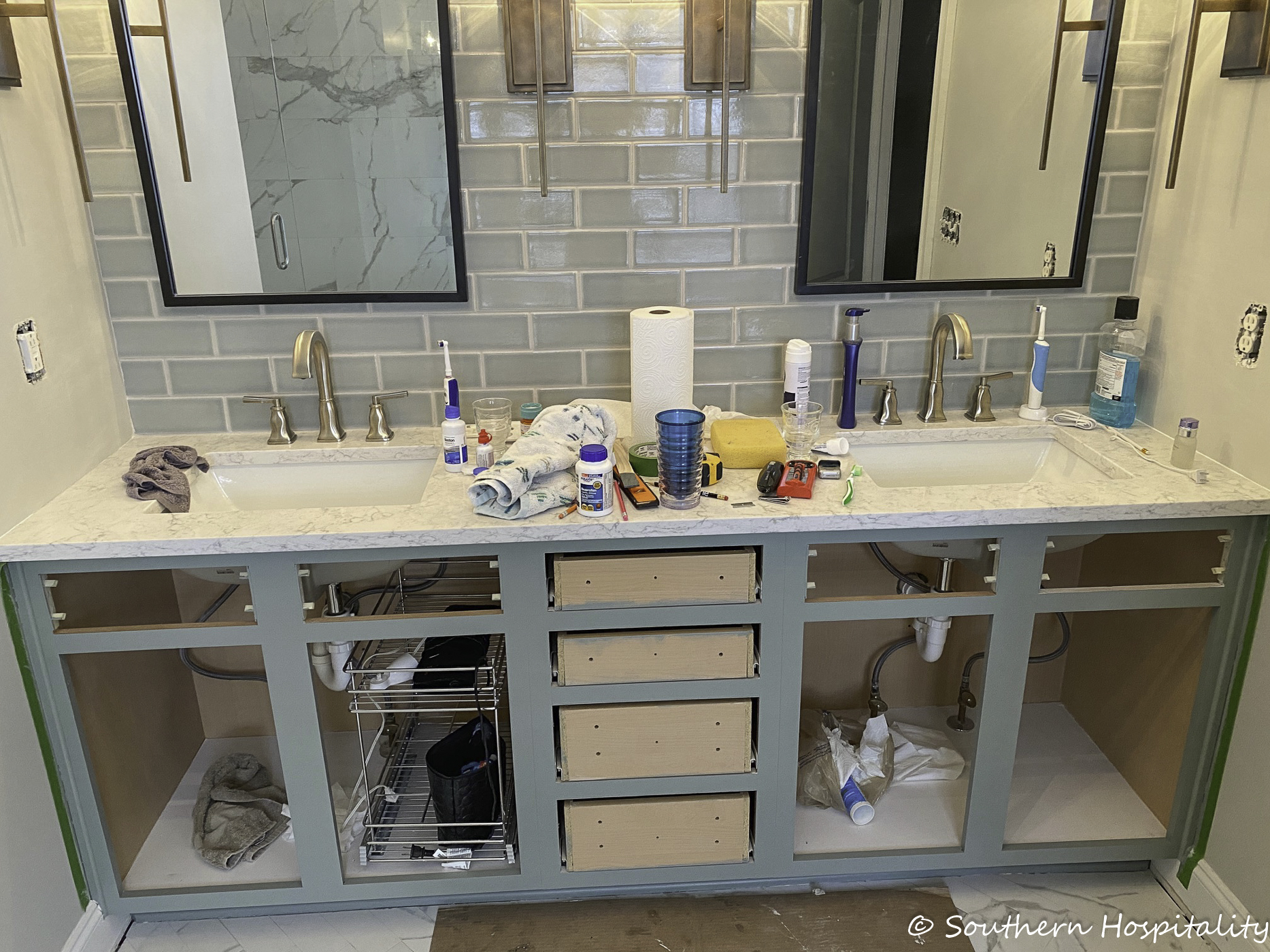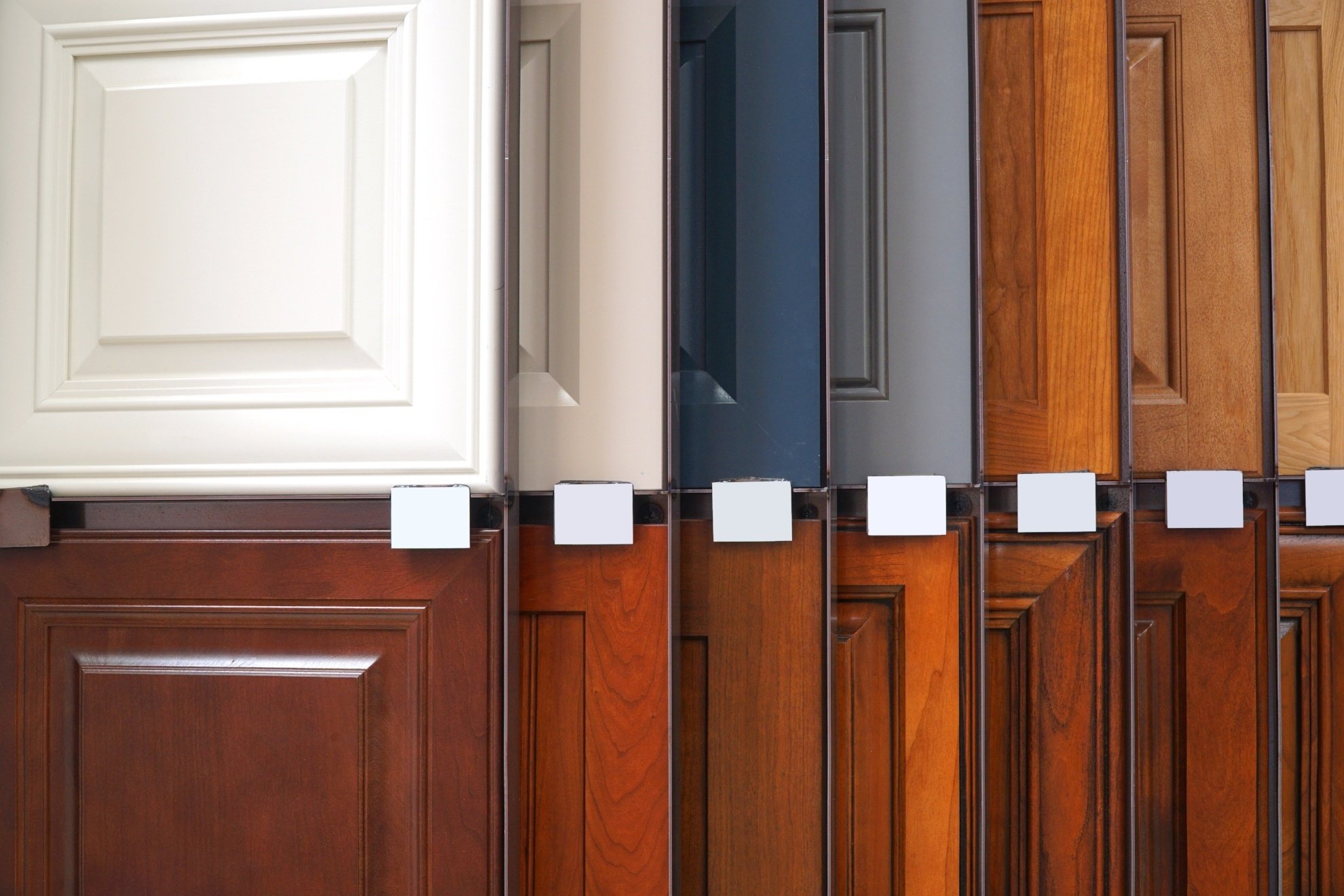Planning & Preparation

Replacing bathroom cabinet doors and drawers can significantly enhance the functionality and aesthetics of your bathroom. This project requires careful planning and preparation to ensure a successful outcome.
Identifying the Reasons for Replacement, Replacing bathroom cabinet doors and drawers
The first step is to identify the reasons for replacing the existing doors and drawers. Common reasons include:
- Damage: Doors and drawers may become damaged due to wear and tear, water damage, or accidental impact.
- Outdated Style: Bathroom cabinets may become outdated over time, and replacing the doors and drawers can give the bathroom a modern look.
- Functional Issues: Doors and drawers may become difficult to open or close, or they may not be able to accommodate the desired storage items.
- Improved Functionality: Replacing doors and drawers with new ones can provide improved functionality, such as soft-close hinges or drawer slides.
Determining the Style and Material
Once the reasons for replacement are identified, it’s essential to determine the style and material for the new doors and drawers. Consider the following factors:
- Existing Bathroom Style: The new doors and drawers should complement the overall style of the bathroom. If the bathroom has a modern style, consider sleek and minimalist doors and drawers. For a traditional bathroom, consider ornate or detailed designs.
- Personal Preferences: Choose a style and material that you find aesthetically pleasing and that aligns with your personal preferences.
- Durability and Maintenance: Consider the durability and maintenance requirements of different materials. For example, wood doors and drawers may require more maintenance than painted or laminate options.
- Budget: Set a budget for the project and choose materials and styles that fit within your financial constraints.
Measuring the Existing Cabinet Dimensions
Accurate measurements are crucial for ensuring that the new doors and drawers fit properly. Use a tape measure to determine the following dimensions:
- Cabinet Width: Measure the width of the cabinet opening, including any molding or trim.
- Cabinet Height: Measure the height of the cabinet opening, including any molding or trim.
- Door/Drawer Width: Measure the width of the existing doors or drawers.
- Door/Drawer Height: Measure the height of the existing doors or drawers.
- Door/Drawer Thickness: Measure the thickness of the existing doors or drawers.
Create a detailed plan with these measurements, including any necessary adjustments for new hardware or design features.
Researching and Comparing Hardware
The hardware used for the new doors and drawers plays a significant role in their functionality and aesthetics. Research and compare different types of hardware, including:
- Hinges: Consider the type of hinges for the doors, such as traditional, concealed, or soft-close hinges.
- Drawer Slides: Choose drawer slides that provide smooth operation and prevent drawers from sticking or falling out.
- Knobs and Pulls: Select knobs and pulls that complement the style of the doors and drawers and are comfortable to use.
Factor in the cost, durability, and ease of installation when making hardware selections.
Creating a Budget
Develop a detailed budget for the project, considering the following costs:
- Materials: Include the cost of doors, drawers, hardware, paint, and any other necessary materials.
- Labor: If you plan to hire a professional to install the new doors and drawers, factor in the labor costs.
- Tools: If you plan to install the doors and drawers yourself, consider the cost of any necessary tools, such as a saw, drill, and screwdriver.
Allocate a contingency fund for unexpected costs or changes in the project scope.
Removal & Installation: Replacing Bathroom Cabinet Doors And Drawers

This section Artikels the steps involved in removing the old cabinet doors and drawers, preparing the cabinet frames for the new ones, and installing the new doors and drawers. It also covers the installation of new hardware, such as hinges, handles, and pulls.
Removing Old Doors and Drawers
Before removing the old doors and drawers, it is important to gather the necessary tools, including a screwdriver, a drill, and a level. You may also need a helper to assist with heavier items. Once you have gathered the necessary tools, you can begin removing the old doors and drawers.
- Remove the hinges: Use a screwdriver to remove the screws that hold the hinges to the cabinet frame and the doors.
- Remove the doors: Once the hinges are removed, carefully lift the doors off the cabinet frame.
- Remove the drawers: If the drawers have slides, you can remove them by pulling them out and lifting them off the slides. If the drawers have a different type of system, you may need to consult the manufacturer’s instructions for removal.
Preparing the Cabinet Frames
Once the old doors and drawers have been removed, you need to prepare the cabinet frames for the new ones. This involves cleaning the frames and making sure that they are in good condition.
- Clean the frames: Use a damp cloth to wipe down the cabinet frames and remove any dust or debris.
- Check for damage: Inspect the cabinet frames for any damage, such as cracks or scratches. If you find any damage, you may need to repair it before installing the new doors and drawers.
- Fill any holes: If the old hinges or hardware left behind any holes, you can fill them with wood filler and sand them smooth.
Installing New Doors and Drawers
Once the cabinet frames have been prepared, you can begin installing the new doors and drawers. This process involves attaching the new doors and drawers to the cabinet frames and ensuring that they are properly aligned and functional.
- Install the hinges: Attach the new hinges to the cabinet frames and doors using screws. Make sure that the hinges are aligned properly and that the doors open and close smoothly.
- Install the doors: Once the hinges are installed, carefully hang the new doors on the cabinet frames.
- Install the drawers: Install the new drawers by sliding them onto the drawer slides or using the appropriate installation method for your drawers. Make sure that the drawers open and close smoothly and that they are aligned properly.
Installing New Hardware
The final step in replacing bathroom cabinet doors and drawers is to install new hardware, such as hinges, handles, and pulls. This process involves attaching the new hardware to the cabinet doors and drawers.
- Install the hinges: Attach the new hinges to the cabinet frames and doors using screws. Make sure that the hinges are aligned properly and that the doors open and close smoothly.
- Install the handles and pulls: Attach the new handles and pulls to the cabinet doors and drawers using screws. Make sure that the handles and pulls are securely attached and that they are positioned correctly.
Finishing Touches

With the new doors and drawers installed, it’s time to add the finishing touches to your bathroom cabinet. This includes cleaning and polishing the new surfaces, installing any necessary accessories, and organizing the contents of the cabinet. By taking these steps, you’ll ensure your bathroom cabinet looks its best and remains functional for years to come.
Cleaning and Polishing
After installation, it’s important to clean and polish the new doors and drawers. This removes any dust or debris accumulated during the installation process and helps protect the finish.
- Use a soft, damp cloth to wipe down the surfaces of the doors and drawers. Avoid using abrasive cleaners or sponges, as these can damage the finish.
- For a polished look, apply a furniture polish designed for the type of finish on your cabinet. This helps protect the surface from scratches and keeps it looking shiny.
- For wooden cabinets, consider applying a sealant to protect the wood from moisture and spills.
Installing Accessories
Many bathroom cabinets benefit from the addition of accessories, such as shelves, dividers, or organizers. These accessories can help maximize storage space and keep the cabinet organized.
- Shelves: Additional shelves provide more storage space and allow you to separate items by category. They can be made of wood, metal, or plastic, and are often adjustable to fit your needs.
- Dividers: Dividers are useful for creating compartments within drawers, keeping items separate and organized. They can be made of plastic, metal, or wood and are often adjustable to fit the width of the drawer.
- Organizers: Organizers can be used to store small items such as toiletries, makeup, or jewelry. They come in various shapes and sizes, including trays, baskets, and bins.
Organizing the Contents
Once the accessories are installed, it’s time to organize the contents of your bathroom cabinet. This step ensures everything has its place and is easily accessible.
- Categorize items: Group similar items together, such as toiletries, medications, and hair care products. This makes it easier to find what you need.
- Utilize vertical space: Use shelves and dividers to maximize vertical space. This helps keep items off the bottom of the cabinet and prevents them from getting lost.
- Store frequently used items within easy reach: Place items you use most often on the top shelves or in the front of drawers.
- Consider using clear containers: Clear containers allow you to see what’s inside without having to open them. This makes it easier to find what you need and keeps your cabinet looking tidy.
Maintaining the New Doors and Drawers
Proper maintenance ensures your new doors and drawers last for years to come.
- Clean regularly: Wipe down the surfaces of the doors and drawers with a damp cloth at least once a week. This helps remove dust and prevent dirt from accumulating.
- Avoid using harsh cleaners: Harsh cleaners can damage the finish of your doors and drawers. Stick to mild cleaners and avoid abrasive sponges.
- Apply furniture polish periodically: Apply a furniture polish designed for the type of finish on your cabinet every few months. This helps protect the surface from scratches and keeps it looking shiny.
- Avoid overloading drawers: Overloading drawers can cause them to warp or break. Make sure to distribute the weight evenly and avoid placing heavy items in drawers.
- Close drawers and doors gently: Slamming drawers and doors can damage the hinges and hardware. Close them gently to ensure they last longer.
Replacing bathroom cabinet doors and drawers can completely transform the look of your space. If you’re looking for a more functional upgrade, consider adding a stylish home hardware bathroom medicine cabinet to maximize storage and keep your essentials organized. With a variety of designs and finishes available, you can easily find a medicine cabinet that complements your bathroom’s style and enhances its overall appeal.
Replacing bathroom cabinet doors and drawers can be a daunting task, but it’s a great way to refresh the look of your bathroom. If you’re looking for a more modern and durable solution, consider stainless steel floor standing bathroom cabinets.
These cabinets offer a sleek and contemporary aesthetic, and their sturdy construction ensures long-lasting use. While they might not be a direct replacement for existing cabinet doors and drawers, they can provide a fresh and functional alternative for your bathroom storage needs.
